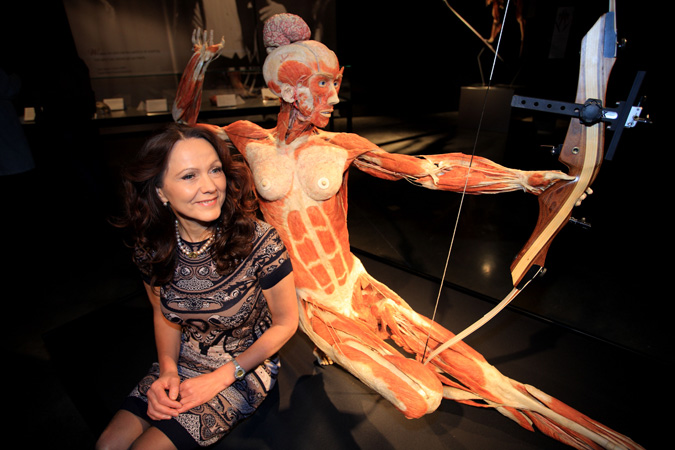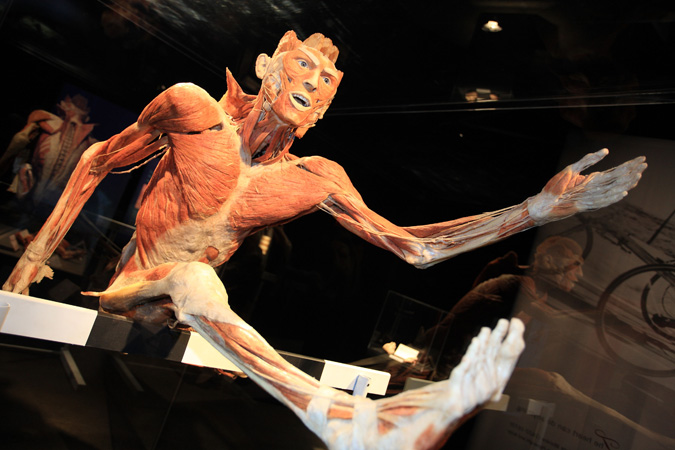Body Worlds: Anatomy and Art
Body Worlds: Anatomy and Art
By Lisa Tran
Gunther von Hagens’ Body Worlds 3, The Original Exhibit of Real Human Bodies and The Story of the Heart, was an exhibit featuring over 200 authentic human specimens, including whole-body Plastinates, organs, and translucent body slices.
The specimens are created through a process called plastination, invented by scientist and anatomist Dr. Gunther von Hagens in 1977. Plastination is the process of replacing the fluids in the body with plastics like silicone rubber, polymers, and resins to permanently preserve them.
As humans we are intricate beings, powerful, yet fragile, but until recently, only medical students have had the privilege of looking at the human body. Body Worlds presents the public with the opportunity to examine human anatomy. The exhibit helps visitors understand their bodies and make informed lifestyle decisions.
The full-body specimens of Body Worlds are positioned in unusual ways, many of which are sports poses, for example, a man jumping a hurdle or throwing a javelin. Dr. Angelina Whalley, creative director of Body Worlds explains that when the exhibit first premiered in Japan in 1991, visitors remarked that the specimens looked too dead – they were displayed in lifeless, rigid poses. Exhibit organizers then began to draw inspiration from Renaissance art – so lifelike, relevant, and beautiful. Dr. Whalley says that the specimens are still people and they should look as lifelike as possible. Positioning them in familiar poses makes them more relatable to visitors. It makes the specimens special and memorable. It freezes a moment in time just like with art.
The theme of Body Worlds 3 was The Story of the Heart. The heart has and always will be a special organ. Whether it is in religion, literature, or pop culture, the heart is held as the seed of our souls. Our bodies are our own personal obligations. What we do to it matters. Often times though, we only pay attention to our own hearts when it becomes diseased. Dr. Whalley believes that we should study the heart throughout one’s entire life.
Body Worlds 3 also brought a Plastinate giraffe to Canada towering over the exhibit at 5.6m tall. The specimen is a reconfiguration of translucent body slices of the giraffe that took two years to complete. The is the first time a giraffe has ever been preserved and provides scientists with valuable and unique insight into the cardiovascular system. How does the heart of a giraffe pump blood all the way to its head, but when the animal bends its neck that flow is not disrupted or harmful to it.
Each of the human specimens comes from a body donation program. During life, people agree to donate their bodies to the exhibit. There are currently 10,000 people on file with 1000 in North America and 70 in Canada. Many volunteers make their decision after seeing first hand one of the Body Worlds exhibits. A full body specimen takes approximately one year to complete. The process includes dissection, plastination, and positioning.
The average age of the specimens on display is mid-50 to mid-60. This is most remarkable because the specimens look very young. We tend to judge people’s age based on their skin, hair colour, posture, and agility. In death, scientists have made these people appear younger by positioning them in poses that they may not have been capable of in life. As much as Body Worlds represents science, it is also poetic. Without an external skin, visitors can easily identify with what they see. They experience self-reflection without a mirror.


